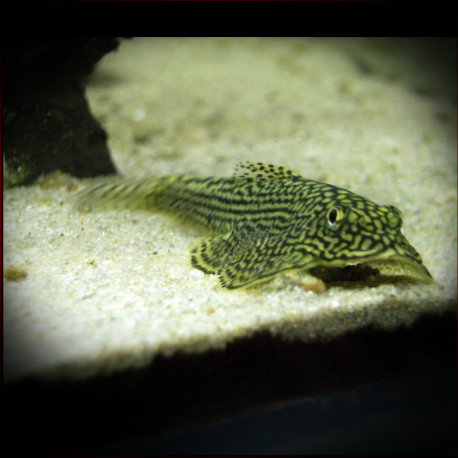More info
Datasheet
| Minimum Tank Size | 90 litres / 23.78 US gallons |
| Maximum Size | 6.5cm / 2.56inches |
| Temperature | 20°C / 68.00°F - 24°C / 75.20°F |
| Hardness | 1.01dgH / 18ppm - 10.03dgH / 179ppm |
| pH | 6.0-7.5 |
Behaviour
In terms of behaviour, Sewellia spp. are dominant among the 'sucker belly' group of loaches, displaying territorial tendencies with some individuals more protective of their space, usually a prime feeding spot. Dominance battles manifest in a belly-to-belly stance with males typically being dominant. These loaches are not inherently aggressive towards dissimilar-looking fishes and can coexist with small, pelagic cyprinids, stream-dwelling gobies, and rheophilic catfishes. However, similarly-shaped gastromyzontids tend to struggle for food and territory, especially in smaller tanks. Sewellia spp. prefer living in large aggregations, showcasing their most intriguing natural behaviors in groups of 6 or more.
Feeding and Diet
The natural diet of Sewellia spp. primarily consists of benthic algae and associated micro-organisms, supplemented with opportunistic intake of insect larvae. In captivity, a well-balanced diet can be achieved using homemade foods rich in fresh vegetables and Spirulina. Ensuring a mature aquarium with ample algae-covered surfaces is crucial for their long-term health. Aquarists may need to maintain a separate tank to grow algae for these herbivorous loaches if the main tank lacks sufficient supply due to quick consumption by other herbivorous companions.
Reproduction & Dimorphism
Sewellia spp. are known for their ease of breeding in aquarium conditions. Controlled breeding requires suitable, mature substrates like large-rounded river gravel to protect eggs from adult predation and provide refuge for fry. Breeding behaviors involve male courtship displays, egg laying, and downstream dispersal of fry in strong water currents. The breeding process can be triggered by temperature changes and cool water exchanges. Male Sewellia develop soft tubercules on pectoral fins, aiding in sexual dimorphism along with body shape distinctions.
Habitat and Distribution
The Tiger Hillstream Loach, native to Vietnam, thrives in fast-flowing, oxygen-rich headwaters and tributaries with rocky substrates and minimal aquatic vegetation. These loaches inhabit stretches with riffles, runs, and pools or cascades, often developing a biofilm carpet on submerged surfaces under clear, sunlit waters. The species is distributed in various provinces in Vietnam and has been sighted in parts of Laos near the Mekong River. Collection locality may influence color and patterning variations, though fundamental characteristics remain consistent.

